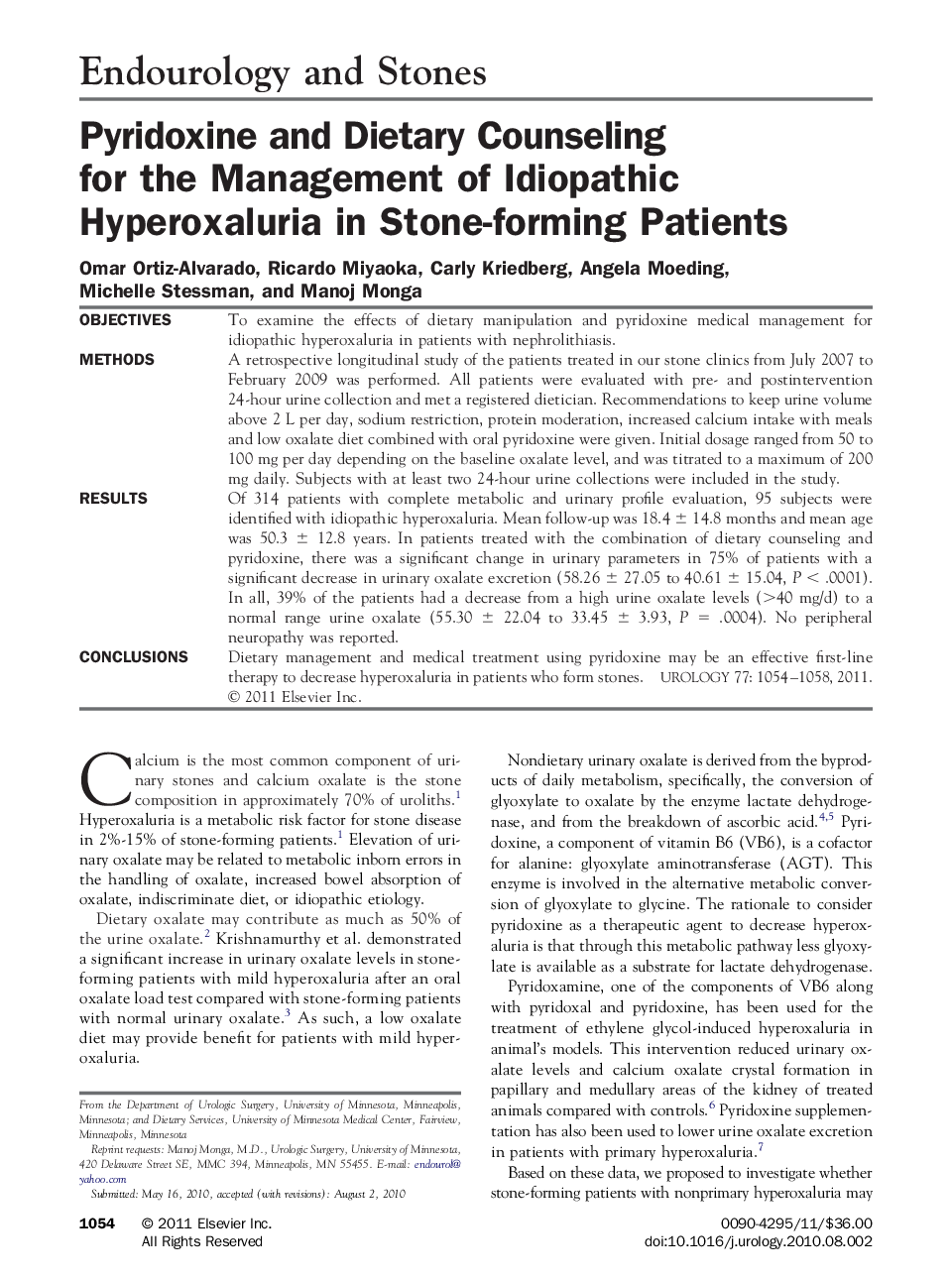| Article ID | Journal | Published Year | Pages | File Type |
|---|---|---|---|---|
| 3900937 | Urology | 2011 | 5 Pages |
ObjectivesTo examine the effects of dietary manipulation and pyridoxine medical management for idiopathic hyperoxaluria in patients with nephrolithiasis.MethodsA retrospective longitudinal study of the patients treated in our stone clinics from July 2007 to February 2009 was performed. All patients were evaluated with pre- and postintervention 24-hour urine collection and met a registered dietician. Recommendations to keep urine volume above 2 L per day, sodium restriction, protein moderation, increased calcium intake with meals and low oxalate diet combined with oral pyridoxine were given. Initial dosage ranged from 50 to 100 mg per day depending on the baseline oxalate level, and was titrated to a maximum of 200 mg daily. Subjects with at least two 24-hour urine collections were included in the study.ResultsOf 314 patients with complete metabolic and urinary profile evaluation, 95 subjects were identified with idiopathic hyperoxaluria. Mean follow-up was 18.4 ± 14.8 months and mean age was 50.3 ± 12.8 years. In patients treated with the combination of dietary counseling and pyridoxine, there was a significant change in urinary parameters in 75% of patients with a significant decrease in urinary oxalate excretion (58.26 ± 27.05 to 40.61 ± 15.04, P < .0001). In all, 39% of the patients had a decrease from a high urine oxalate levels (>40 mg/d) to a normal range urine oxalate (55.30 ± 22.04 to 33.45 ± 3.93, P = .0004). No peripheral neuropathy was reported.ConclusionsDietary management and medical treatment using pyridoxine may be an effective first-line therapy to decrease hyperoxaluria in patients who form stones.
